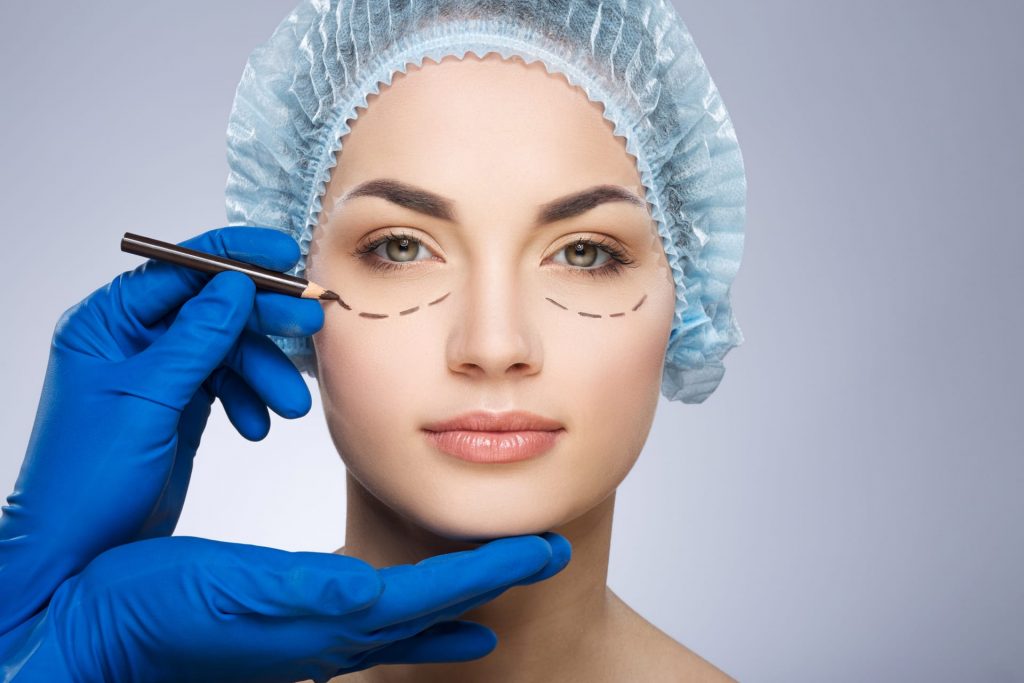Blepharoplasty
Blepharoplasty

Breast Augmentation
31 August 2021
What a blepharoplasty can do for an individual’s appearance
Sagging of the skin underneath and on top of the eyes (the so-called lids) is a natural and inevitable process that occurs with age. Due to the thin and delicate nature of the skin around the eyes, it is one of the first places where signs of aging appear. The eyes begin to look tired, dark circles are more prominent, and the skin above the eyes starts to sag and sometimes folds down towards the eyes. All of these physical changes can begin to create an image that no one wants to face in the mirror, especially when they appear in a younger person due to premature aging or heredity.
Blepharoplasty is a method of plastic surgery that rejuvenates the skin and restores the appearance of the face to its youthful glory. It puts an end to the sad and tired look, can have a positive effect on dark circles, and improves vision which, in some cases, is obstructed due to excessive sagging of the upper eyelid. Several different blepharoplasty techniques can be used in combination according to the patient’s needs. Standard blepharoplasty, laser techniques, and classic blepharoplasty yield impressive results.
Factors that can affect sagging or cause premature aging

When you are young, your delicate eye area can be affected by various habits, such as long hours of sunbathing without glasses and frequent late nights.
Furthermore, heredity, stress, a fat-based diet, and various other bad habits can also cause premature aging around the eyes. The definitive solution to all of the above comes through blepharoplasty.

Who is a good candidate for blepharoplasty
In general, anyone can opt for blepharoplasty as a solution to loose skin around the eyes.
Specifically, if sagging constantly causes a haggard appearance, if women find it difficult to apply makeup to the area, if vision is affected due to the sagging of the upper eyelid, or if someone looks much older than they are in reality, then they are an ideal candidate for blepharoplasty.
Details of the procedure and cost
The surgery can be performed individually on the upper or lower eyelid or both.
In upper blepharoplasty, the skin and fat are removed so that during suturing, the resulting incision is identical to the normal fold of the upper eyelid. In this way, the scar is not visible and appears to be part of the natural anatomy of the eyelid.
In lower blepharoplasty, the incision is made under the eyelashes and moves outwards towards the outer wrinkles in the corner of the eye. Subsequently, excess fat and a small amount of skin are removed, and the area is stitched with a thin suture. At this point, the surgeon can also opt to carry out a suspension of the entire lower eyelid by placing special sutures in the clamp muscle.
Local or general anesthesia will be administered, depending on what was decided beforehand during the consultation. It takes 30 minutes to perform the procedure on each eyelid. The doctor may prescribe local anesthesia, making the process painless but allowing patients to move their eyelids as instructed to achieve a successful result. Once the procedure is over, the patient returns home with a special eye tape. At first, vision will be blurred due to the ointment placed on the eyes, not because blepharoplasty has in any way affected the eyesight.
The operation leaves no scars. Also, as previously mentioned, it does not affect the quality of vision or eye movement at all.
As for the cost of blepharoplasty, there is no set amount. Fluctuations in the price will depend on the difficulty and time it takes to complete the operation. To determine the cost of your treatment, book a consultation session with the doctor to establish goals and assess risks.
Laser eyelid surgery
Dr. Aravanis performs blepharoplasty with a specialized laser (fractional laser) in cases where the patient has incipient eyelid sagging. This bloodless procedure stimulates collagen production and causes tightening of the skin around your eyes.
Before the operation
Patients arrive at the clinic on the day of surgery with an empty stomach and no fluids in their system for a minimum of 8 hours. To begin treatment, an antiseptic solution is applied to the face. This makes it possible to mark off areas that need incisions and identify where each incision will be made. Local anesthesia is then administered to each eyelid, where the incision is to be made in the most convenient order for the doctor.


After the operation – Hospital stay and recovery time
As expected, the patient will be swollen with mild bruising on their face for about a week following surgery. There is no change in facial expression, but the gaze is completely reshaped and becomes more radiant, no longer tired or dull. The excess fat has been removed without affecting the face’s natural appearance.
An essential advantage of the procedure is that the patient can return home after just a few hours.
The patient soothes the eye area with an ice pack to reduce swelling and limit bruising. In most cases, the doctor will prescribe antibiotics as a precautionary measure. The patient can be outside while wearing sunglasses. For those who work from home, three to four days is usually sufficient time for a full recovery. Otherwise, patients are advised to wait at least a week before returning to their normal work schedule. Three weeks after surgery, it is safe for patients to start exercising and lifting weights. The final result will become visible within two months.
What can’t be fixed with blepharoplasty?
Blepharoplasty focuses on creating a younger and more youthful appearance, eliminating eye bags under the eyes and giving them an almond-shaped aesthetic.
What can’t blepharoplasty fix? The wrinkles and signs of aging on the crow’s feet and drooping eyebrows. If you are looking to achieve these kinds of results, your plastic surgeon can combine blepharoplasty with other procedures, such as a lift surgery.
Will the operation need to be repeated?
Nothing can stop time! Following the same logic, blepharoplasty will not prevent the inevitable aging process; after 10 years, the initial effect will gradually diminish. At that stage, the patient can choose to repeat the surgery, given that they are in good health and able to cope with the operation.
What does Dr. George Aravanis offer to his patients?
With a primary focus on patient safety and successful outcomes, Dr. Aravanis sets realistic expectations regarding blepharoplasty.
His past patients are a testament to the extensive clinical experience he has gained over the years. Applying the appropriate method in each case, the doctor ensures safety, with as slight swelling as possible, and the best natural result that meets the individual’s expectations.
Adverse effects or complications
Complications with blepharoplasty are very rare, and the doctor’s extensive knowledge and experience virtually eliminate the possibility of them occurring.
Depending on the individual, minor complications may arise, including postoperative hematoma, which is immediately treated, alteration in the shape of the eyelids that is purely down to the doctor’s skill, and the excessive appearance of the sclera, which improves over time.
READ
FAQ
You should be aware that your eyes will be a little sensitive after the surgery. If you experience discomfort, you can take over-the-counter painkillers and instantly feel better. The swelling and bruising will disappear within five to ten days.
You may start to wear contact lenses after a week if you feel entirely comfortable doing so. Sunglasses are extremely important. You can apply makeup around ten days after the procedure. You will be ready for the gym after about two weeks.
In cases where there is no skin sagging due to aging, the plastic surgeon can, in addition to the classic blepharoplasty without an external incision, suggest some laser application on the surface of the eyelids, with less postoperative recovery.
If a patient has serious health problems concerning the eyes, blepharoplasty should not be performed. Such cases include cataracts, glaucoma, and exophthalmos.
Most people who undergo blepharoplasty are over 40 years of age when aging begins to show in the skin around the eye area. The earlier need for surgery may be due to trauma or genetics.
Not when you are treated by an experienced plastic surgeon. The goal is to make the eyes look youthful, bright, and rested without revealing any signs that surgery has occurred.
There is no restriction on the choice of season or month. The only consideration is that the person should not work for about 15 days after surgery.
You will certainly enjoy a rested and youthful look for ten years! Some people who watch their diet, don’t smoke, sleep well, and have good skin quality can maintain the results for up to 15 years!
Yes. The upper or lower eyelid. However, it is advisable to operate on them together for the best results.
Smoking postoperatively can lead to slow healing. For this reason, it is recommended that you quit both before and after surgery. In combination with a poor diet and excessive alcohol consumption, the effect will wear off much faster.
A balanced diet rich in fiber and drinking more than eight glasses of water daily keeps the body hydrated, which is key for beautiful skin on your face and eyes.
DISCOVER
Innovative Surgical Services
Articles
CONTACT US
Ask the experts
You are only a few steps away from becoming the best version of yourself!






